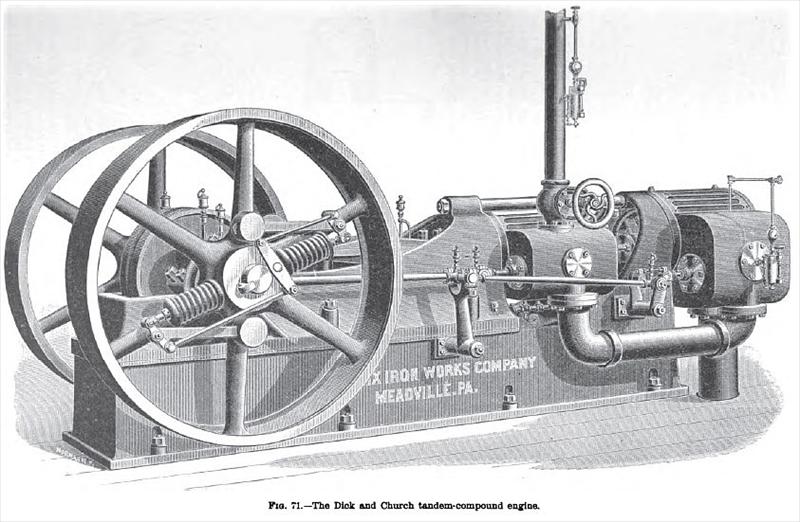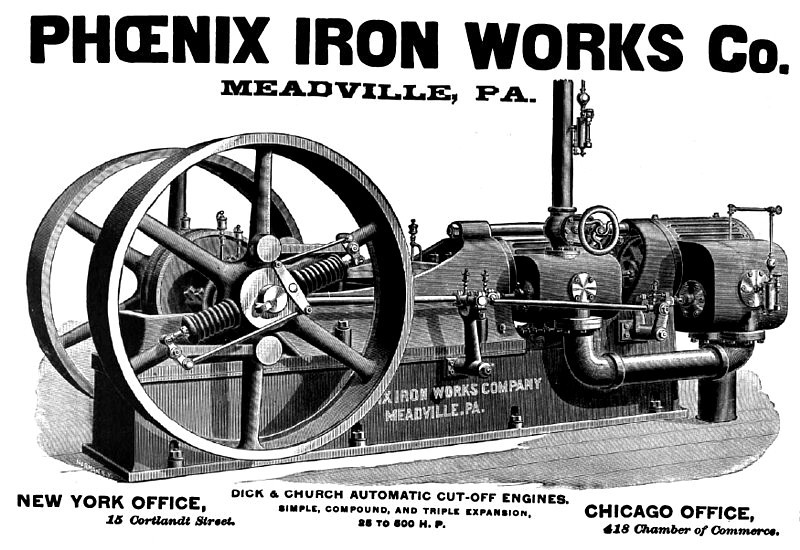|
Title: |
1895 Article-Phœnix Iron Works Co., Dick & Church Steam Engine |
|
Source: |
Modern Mechanism 1895 pg 322-323 & Cassier's Magazine, Mar 1893, pg. 20 |
|
Insert Date: |
11/11/2012 12:50:04 PM |
|
The Dick & Church Tandem-Compound Engine, made by the Phoenix Iron-Works Co., Meadville, Pa., is shown in Fig. 71. It is a two-cylinder compound, both cylinders being overhung, and yet supported from the bed independently of each other, so that they are free to expand and keep in perfect alignment, there being no excessive weight or strain upon either cylinder. The bed of the engine is made in two parts, the lower or sub-base extending the entire length of the machine, and having a hood at the rear end, to which is attached the low pressure cylinder. On this sub-base, and bolted to it the same as to a foundation, stands the upper bed-plate, on which are the main bearings, guides, and the overhanging high-pressure cylinder. This is perhaps the principal distinctive feature of the engine. It allows each cylinder to expand freely and independently of the other, and either cylinder is easy of access for repairs without disturbing the other. The rod seen passing over the cylinders ties the two hoods together, making a rigid construction. The valve mechanism is so arranged that the point of cut-off for both cylinders is under the control of the governor, and varies with the load, thus maintaining a proper distribution of load and temperatures between the two cylinders. The relative points of cut-off can be adjusted by the engineer to suit varying conditions, but once adjusted they vary together by the action of the governor, thus preventing abnormal variations in receiver pressure. The valves are of the double-piston type, working in casings, which are readily removable for repairs. |
|
 1895 Phœnix Iron Works Co., Dick & Church Steam Tandem Compound Engine
1895 Phœnix Iron Works Co., Dick & Church Steam Tandem Compound Engine
 1893 Phœnix Iron Works Co., Dick & Church Steam Tandem Compound Engine
1893 Phœnix Iron Works Co., Dick & Church Steam Tandem Compound Engine
|
|